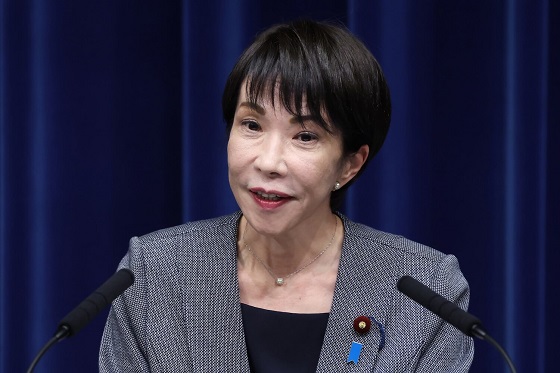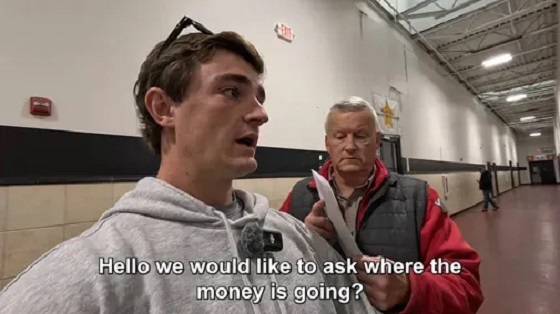Business
Trudeau gov’t appears to back down on ‘digital services tax’ plans
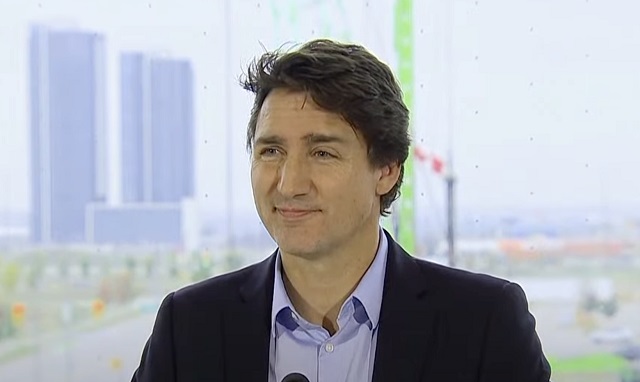
From LifeSiteNews
‘feds need to stop dreaming up new taxes and new ways to make life more expensive.’
A plan by Prime Minister Justin Trudeau’s federal government to tax the advertising revenues of non-Canadian tech giants and other companies – which could spark a major trade war and make accessing the internet more expensive – seems to be off the table, at least for now.
According to Canadian law professor Dr. Michael Geist, the Trudeau government seems to have “quietly backed down from its plans to implement a new Digital Services Tax (DST) as of January 2024.”
In its 2019 election party platform, the Trudeau Liberals had promised to impose a three percent so-called DST, which could have brought in an estimated $7.2 billion, but at the expense of tech giants that all provide services to Canadians.
In October, the head of the Canadian Taxpayers Federation (CTF) Franco Terrazzano said the “feds need to stop dreaming up new taxes and new ways to make life more expensive.”
“Prime Minister Justin Trudeau should be doing everything he can to make life more affordable, but this Digital Services Tax will mean higher prices for ordinary Canadians,” he noted.
The CTF noted that when France introduced a similar tax against tech giants such as Google, Facebook, Amazon, and other large online sites, it caused everything to get more expensive in the country.
“An economic impact assessment of the French digital services tax shows that about 55% of the total tax burden will be passed on to consumers, 40% to online vendors and only 5% borne by the digital companies targeted by the new tax,” noted the CTF.
Geist said that after months of the Trudeau government insisting a DST would be incoming next year, the government has removed that “implementation deadline” in their recent Fall Economic Statement.
When news first broke of the tax in late 2019, many U.S. Senators and Representatives signed letters asking the Canadian government to delay implementing a DST, which they warned would have created disastrous consequences.
As it stands now, a 1984 Convention Between Canada and the U.S. regarding taxes on income lets American web companies only pay tax in their home state. Indeed, a federal report even confirmed that such a tax would breach the 1984 treaty and does not work with current Canadian income tax laws.
Canadian Finance Minister Chrystia Freeland had been insisting up until recently a DST would be coming. In the summer 2023, she said, “Two years ago, we agreed to pause the implementation of our own Digital Services Tax (DST), in order to give time and space for negotiations on Pillar One. But we were clear that Canada would need to move forward with our own DST as of January 1, 2024, if the treaty to implement Pillar One has not come into force.”
Even earlier this month Freeland seemed “cautiously optimistic” a deal could be reached between Canada and the U.S. for a DST.
Geist noted that it now “appears that the optimism came from a decision to simply remove the January 1, 2024 start date,” to implement the tax and move it down the road to a later date.
As noted in the Trudeau Liberals Fall Economic Statement, “In order to protect Canada’s national economic interest, the government intends to move ahead with its longstanding plan for legislation to enact a Digital Services Tax in Canada and ensure that businesses pay their fair share of taxes and that Canada is not at a disadvantage relative to other countries.”
“Forthcoming legislation would allow the government to determine the entry-into-force date of the new Digital Services Tax, as Canada continues conversations with its international partners.”
Geist noted that the delay in implementing a DST means that it “buys time for a potential international agreement on implementing a global approach to the issue and should relieve some of the external pressure.”
Putting in place DST now would create ‘significant risks’
As it stands now, the Trudeau Liberals have already pushed forth bills that will regulate the internet. This includes the federal government’s censorship Bill C-11, the Online Streaming Act, which has been blasted by many as allowing the government more control of free speech through potential new draconian web regulations.
Another Trudeau internet censorship law, Bill C-18, the Online News Act, became law in June 2023 despite warnings that it will end free speech in Canada. This new law forces social media companies to pay Canadian legacy media for news content shared on their platforms.
Geist observed that while implanting a DST on tech giants might be more “preferable to the cross-industry subsidy model found in Bills C-11 and C-18,” pushing forth with a DST now would bring disastrous consequences and could spark a trade war.
“Moving ahead now would have created significant risks, including the prospect of billions in retaliatory tariffs. Led by Bill C-18 and the digital services tax, the government talked tough for months about regulating big tech,” wrote Geist.
“But with the (Fall Economic Statement) FES providing a massive bailout to compensate for the harm caused by the Online News Act and the decision to hold off on implementing the DST, it would appear that the tough talk has been replaced by much-needed realism on what amounted to deeply flawed policies and a weak political hand.”
Geist has continually warned that the Trudeau government’s meddling with big tech by trying to regulate the internet will not stop at “Web Giants,” but will lead to the government going after “news sites” and other “online” video sites as well.
Business
The great policy challenge for governments in Canada in 2026
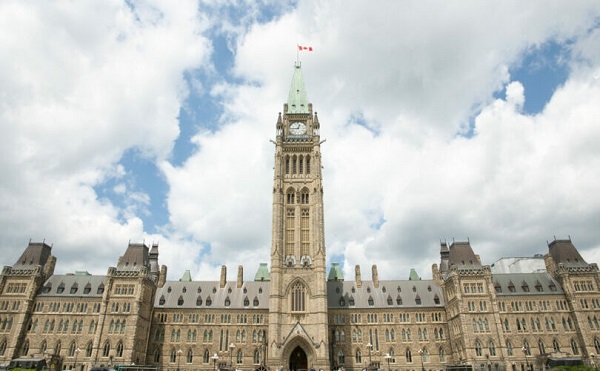
From the Fraser Institute
According to a recent study, living standards in Canada have declined over the past five years. And the country’s economic growth has been “ugly.” Crucially, all 10 provinces are experiencing this economic stagnation—there are no exceptions to Canada’s “ugly” growth record. In 2026, reversing this trend should be the top priority for the Carney government and provincial governments across the country.
Indeed, demographic and economic data across the country tell a remarkably similar story over the past five years. While there has been some overall economic growth in almost every province, in many cases provincial populations, fuelled by record-high levels of immigration, have grown almost as quickly. Although the total amount of economic production and income has increased from coast to coast, there are more people to divide that income between. Therefore, after we account for inflation and population growth, the data show Canadians are not better off than they were before.
Let’s dive into the numbers (adjusted for inflation) for each province. In British Columbia, the economy has grown by 13.7 per cent over the past five years but the population has grown by 11.0 per cent, which means the vast majority of the increase in the size of the economy is likely due to population growth—not improvements in productivity or living standards. In fact, per-person GDP, a key indicator of living standards, averaged only 0.5 per cent per year over the last five years, which is a miserable result by historic standards.
A similar story holds in other provinces. Prince Edward Island, Nova Scotia, Quebec and Saskatchewan all experienced some economic growth over the past five years but their populations grew at almost exactly the same rate. As a result, living standards have barely budged. In the remaining provinces (Newfoundland and Labrador, New Brunswick, Ontario, Manitoba and Alberta), population growth has outstripped economic growth, which means that even though the economy grew, living standards actually declined.
This coast-to-coast stagnation of living standards is unique in Canadian history. Historically, there’s usually variation in economic performance across the country—when one region struggles, better performance elsewhere helps drive national economic growth. For example, in the early 2010s while the Ontario and Quebec economies recovered slowly from the 2008/09 recession, Alberta and other resource-rich provinces experienced much stronger growth. Over the past five years, however, there has not been a “good news” story anywhere in the country when it comes to per-person economic growth and living standards.
In reality, Canada’s recent record-high levels of immigration and population growth have helped mask the country’s economic weakness. With more people to buy and sell goods and services, the overall economy is growing but living standards have barely budged. To craft policies to help raise living standards for Canadian families, policymakers in Ottawa and every provincial capital should remove regulatory barriers, reduce taxes and responsibly manage government finances. This is the great policy challenge for governments across the country in 2026 and beyond.
Business
How convenient: Minnesota day care reports break-in, records gone
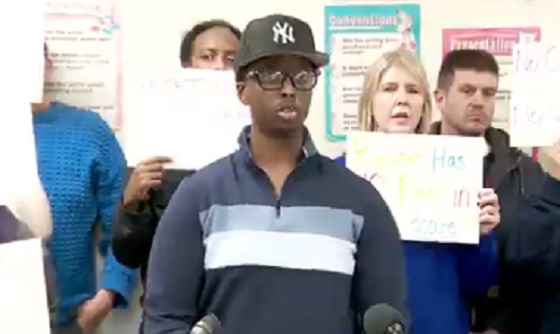
A Minneapolis day care run by Somali immigrants is claiming that a mysterious break-in wiped out its most sensitive records, even as police say officers were never told that anything was actually stolen — a discrepancy that’s drawing sharp attention amid Minnesota’s spiraling child care fraud scandal.
According to the center’s manager, Nasrulah Mohamed, someone forced their way into Nakomis Day Care Center earlier this week by entering through a rear kitchen area, damaging a wall and accessing the office. Mohamed told reporters the intruder made off with “important documentation,” including children’s enrollment records, employee files, and checkbooks tied to the facility’s operations.
But a preliminary report from the Minneapolis Police Department tells a different story. Police say no loss was reported to officers at the time of the call. While the department confirmed the center later contacted police with additional information, an updated report was not immediately available.
Video released by the day care purporting to show damage from the incident depicts a hole punched through drywall inside what appears to be a utility closet, with stacks of cinder blocks visible just behind the wall — imagery that has only fueled skepticism as investigators continue to unravel what authorities have described as one of the largest fraud schemes ever tied to Minnesota’s human services programs.
Mohamed blamed the alleged break-in on fallout from a viral investigation by YouTuber Nick Shirley, who recently toured nearly a dozen Minnesota day care sites while questioning whether they were legitimately operating. Shirley’s video has racked up more than 110 million views. Mohamed insisted the coverage unfairly targeted Somali operators and said his center has since received what he described as hateful and threatening messages.
A manager at the Nokomis Daycare Center in Minneapolis detailed "extensive vandalism" at the facility during a Wednesday news conference.
Manager Nasrulah Mohamed reported that the suspect stole important employee and client documents, an incident he attributed to YouTuber Nick… pic.twitter.com/71nNTSXdTT
— FOX 9 (@FOX9) December 31, 2025
“This is devastating news, and we don’t know why this is targeting our Somali community,” Mohamed said, calling Shirley’s reporting false. Nakomis Day Care Center was not among the facilities featured in the video.
The break-in claim surfaced as law enforcement and federal officials continue to expose a massive fraud network centered in Minneapolis, involving food assistance, housing, and child care payments. Authorities say at least $1 billion has already been identified as fraudulent, with federal prosecutors warning the total could climb as high as $9 billion. Ninety-two people have been charged so far, 80 of them Somali immigrants.
Late Tuesday, the U.S. Department of Health and Human Services announced it was freezing all federal child care payments to Minnesota unless the state can prove the funds are being used lawfully. The payments totaled roughly $185 million in 2025 alone.
Minnesota Gov. Tim Walz, under intensifying scrutiny for allowing fraud to metastasize for years, responded by attacking the Trump administration rather than addressing the substance of the findings. “This is Trump’s long game,” Walz wrote on X Tuesday night, claiming the administration was politicizing fraud enforcement to defund programs — despite federal officials pointing to documented abuse and ongoing criminal cases.
Meanwhile, questions continue to swirl around facilities already flagged by investigators. Reporters visiting several sites highlighted in Shirley’s video found at least one — Quality “Learing” Center — operating with children inside despite state officials previously saying it had been shut down. The Minnesota Department of Children, Youth, and Families later issued a confusing clarification, saying the center initially reported it would close but later claimed it would remain open.
As Minnesota scrambles to respond to the funding freeze and mounting arrests, the conflicting accounts surrounding the Nakomis Day Care incident underscore a broader problem confronting state leaders: a system so riddled with gaps and contradictions that even basic facts — like whether records were actually stolen — are now in dispute, while taxpayers are left holding the bill.
-

 International1 day ago
International1 day agoTrump confirms first American land strike against Venezuelan narco networks
-

 Business1 day ago
Business1 day agoHow convenient: Minnesota day care reports break-in, records gone
-

 Opinion2 days ago
Opinion2 days agoGlobally, 2025 had one of the lowest annual death rates from extreme weather in history
-

 Business1 day ago
Business1 day agoThe great policy challenge for governments in Canada in 2026
-

 Bruce Dowbiggin4 hours ago
Bruce Dowbiggin4 hours agoThe Rise Of The System Engineer: Has Canada Got A Prayer in 2026?
-

 International4 hours ago
International4 hours agoMaduro says he’s “ready” to talk
-

 International4 hours ago
International4 hours agoLOCKED AND LOADED: Trump threatens U.S. response if Iran slaughters protesters



